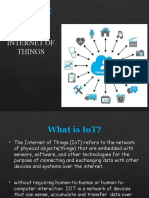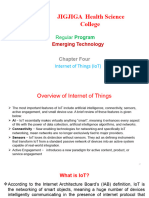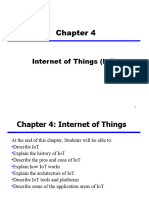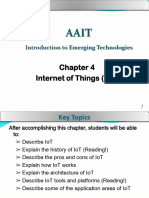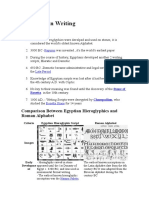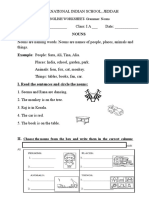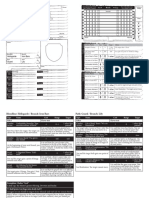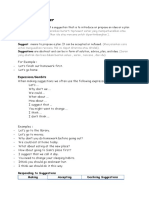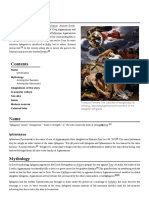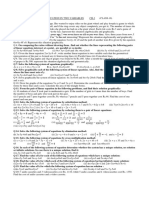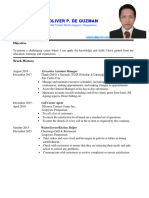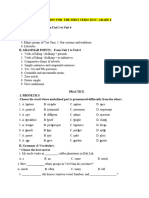0% found this document useful (0 votes)
7 views34 pagesCha 4
Chapter Four discusses the Internet of Things (IoT), highlighting its key features such as artificial intelligence, connectivity, and the use of sensors in enabling smart devices. It outlines the history, advantages, and challenges of IoT, as well as its architecture and various applications in sectors like agriculture, healthcare, and smart cities. The chapter emphasizes the transformative potential of IoT in enhancing customer engagement, optimizing technology, and improving resource management.
Uploaded by
Abinet ArbaCopyright
© © All Rights Reserved
We take content rights seriously. If you suspect this is your content, claim it here.
Available Formats
Download as PDF, TXT or read online on Scribd
0% found this document useful (0 votes)
7 views34 pagesCha 4
Chapter Four discusses the Internet of Things (IoT), highlighting its key features such as artificial intelligence, connectivity, and the use of sensors in enabling smart devices. It outlines the history, advantages, and challenges of IoT, as well as its architecture and various applications in sectors like agriculture, healthcare, and smart cities. The chapter emphasizes the transformative potential of IoT in enhancing customer engagement, optimizing technology, and improving resource management.
Uploaded by
Abinet ArbaCopyright
© © All Rights Reserved
We take content rights seriously. If you suspect this is your content, claim it here.
Available Formats
Download as PDF, TXT or read online on Scribd
/ 34







